3D-printing: share your pictures
I thought it was nice to start a post in which users share their 3D-printed models. As you can see from my examples, they can be amazing (at least I think so;). Please share your own examples!
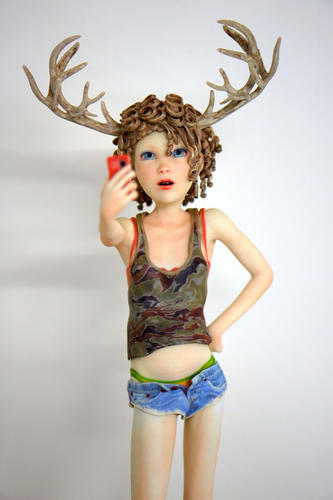

DSC09072.JPG
1331 x 2000 - 260K
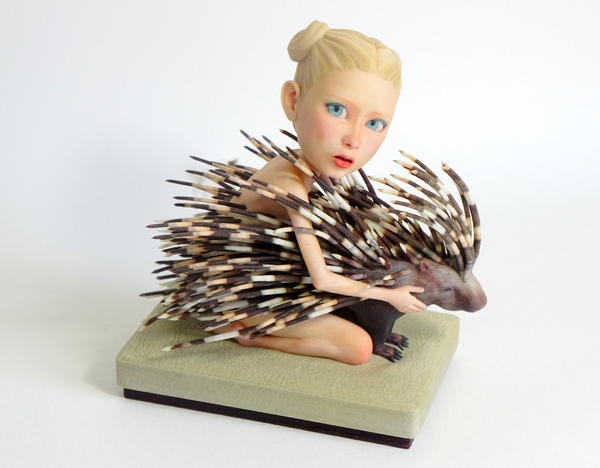

SOLD_OUT_3D-printed_statuette_037_Pincrush_1.JPG
2000 x 1560 - 552K
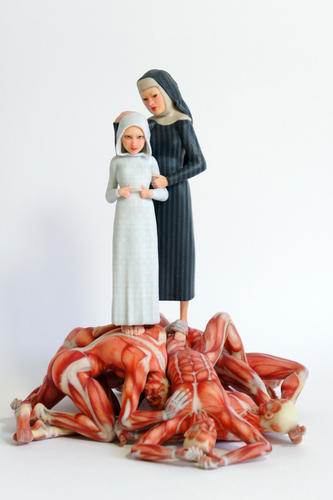

SOLD_OUT_3D-printed_statuette_014_Sola_Fide_1.JPG
1331 x 2000 - 453K
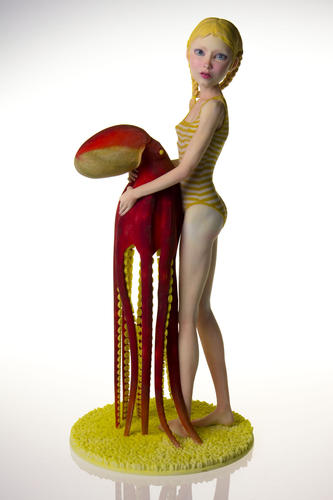

IN_STOCK_3D-printed_statuette_054_Venus_1.JPG
1331 x 2000 - 221K
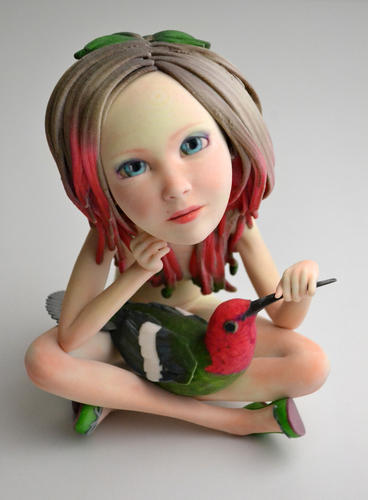

IN_STOCK_3D-printed_statuette_044_Humming_1.JPG
1471 x 2000 - 552K


Comments
Where do you get these done? I am desperately trying to get some of my work through Sculpteo, but it keeps falling over.
A lot of businesses do this, but as far as I know, the two biggest (and cheapest) are Shapeways and i.materialise. Shapeways is difficult because the last time I used them, they only accepted vmrl's (wrl) and had issues with scaling because of which models where rejected. Maybe this is now solved, but I don't know. I use i.materialise (in Belgium), I think they are the best!
Thanks. Hopefully I will be back later with some photos! :D
Fantastic. Good to see familiar products used creatively too.
What was the trial and error process like?
It wasa nightmare;)! For non-colored models it's fairly easy to get them printed (I was able to do that within a month directly out of carrara), but for models with textures it's really difficult, and it stays like that with the current softwares. It took me more than a year to get satisfactory results, and a lot of money to...
Eric, those are fantastic! Love the clever and whimsical subjects!
Fascinating!
Please, where did you get the porcupine????
Was worth it. Everything looks nice and crisp and serves the ideas/concepts really well.
99% perspiration: Achieved!!
These look great!
Shapeways can take some other formats, but they require closed, manifold objects. Does i.materialize accept non-manifold objects? If not, how did you process your files? Did you have to decimate your models? I'm very interested in trying to print some models. :)
Is 3D printing of models allowed under the terms of the EULA?
IANAL/TINLA, nor a DAZzler who could give you permission or at least a better explanation. But the short answer is Yes, there's no legal difference between a 3D print and a 2D print of a render. Slightly longer answer is that the EULA forbids distribution of the mesh, which means if you have to give someone else a copy of the mesh so they can print it out for you that could be a problem -- it's a problem that's been hashed out elsewhere, but I don't know where nor do I remember how it was resolved.
Can't see why not, after all it really is no different to whacking out images via a traditional ink printer, the only tripwire I can foresee is the sending the 3D model to be printed to the company involved. The way around this would be to print your own with one of the many affordable 3D printers now available (though you'd probably have to paint the models yourself).
I'd like to learn more about your process. Did you have to turn the figures into single solid meshes? Did you have to sculpt in much of the detail we see? Are you just working in poser/studio?
The latest answer from DAZ support is that as long as you can't derive the mesh from the printed model, they aren't concerned. HOWEVER, the Renderosity license specifically "does not grant permission to produce a real, tangible replica".
I would sill like to learn more about your process.
Yes, what Joe said. *smile*
Here some answers...
Yes, everytime a model is fit to be '3d-printed', it has to be manifold, that is to say it has to be watertight and flipped and intersecting triangles are below a certain threshold. To achieve this, you have to 'repair' 3D-models in a third-party software like the open source ones: MeshLab or Netfabb. However, these programs 'throw away' any texturing and other color information. The only two programs I know that retain color information, are Materialise Magics and DeskArtes 3Data Expert (I use both). These do in essence the same job as Meshlab, but retain the color-information.
The biggest problem in printing 'standard' 3D-models like the ones you see in DAZ, are the parts of the model that are build up by 'planes'. If you want to let these be recognized by the printer as 'volumes', you have to 'thicken' them. In a lot of programs there are solutions for this (by hand or automatic). The process called 'shrinkwrap' is the most elegant way to do this. The thing is that for instance hairs, need a lot more thickening than a human figure, so you have to break up your scene in the individual parts and thicken them seperately before you export them to the printer. The thickening itself is problematic because it produces errors in the mesh and with complex shapes, it places heavy recources on your computer. You will have to find out a balance between an acceptable endresult and what your computer can handle.
Please forgive my ignorance but I ask in order to learn...
What do you mean by models must be "manifold" to be 3D Printed?
What do you mean by "watertight", "flipped" and "intersecting triangles"?
I am not clear on what this phrase means: "parts of the model that are build up by 'planes'. If you want to let these be recognized by the printer as 'volumes', you have to 'thicken' them. ".
I thank you very much for helping us all understand this process better and look forward to hearing more about it. Thank you so much for lending your expertise and talent to us and helping us understand this process.
Here is a tutorial on the Shapeways-site where they explain what kind of errors can occur in 3D-models: http://www.shapeways.com/tutorials/fixing-non-manifold-models
Basically the 3D-model you want to print, has to be able to 'exist' in reality. This means that nowhere in the model, there can be surfaces that have no 'thickness' (and are therefore infinately 'thin'). If you for example have a sphere in which one triangle is missing, the printer doesn't recognize this as a shape, but just as a curved surface with no thickness that cannot be printed.
Unfortunately, at this time you will have to find out yourself how to fix models if you want to get them printed. Everytime it's different, so read a lot of tutorials, or ask someone to fix the models for you;)
Well the part about planes is pretty simple.. it has to have 3d depth, not single one sided poly deep.
hehe... cross-post ;)
Luckily, the main issue with DAZ market objects would probably be these one sided single poly deep faces. duplicate verts and edges are pretty rare from what I've seen in DAZ market objects. So are missing polys where there should be polys (although this is more likely then dup vert/edges.) Blender has some good tools for finding and repairing these but I don't have the links handy for showing one how to use these particular tools. One also has to tackle learning Blender's basics if going this route. All of the items on the checklist are basically on the 'is it well made' checklist, which is part of what one gets when buying for DAZ store, after the object goes through Q&A. Older objects might be a problem, Gen3 and earlier... but I haven't run into anything noticeable yet.
One way to get an idea of the quality of the mesh is to go into the data folder and double-click on the obj itself, look at it in wireframe/shaded wireframe. It is hard to see dup edges/verts this way however, one would have to load the obj up into Blender and use it's tools afaik.
Btw, objects one gets 'for free' are highly likely to have many, even all of these problems... high unnecessary poly count, missing faces, dup verts/edges, reversed normals... All of which can cause problems for any software package trying to work with the object. 3D printing just happens to be more sensitive then most regarding these issues.
Oh, the intersecting triangles beyond a certain point mentioned I believe is also referred to as 'extraordinary vertices' and refers to where there are multiple polys joining on one vert. In good design this should be kept to a minimum and also kept off of any edges or areas where it would cause a perturbance in the surface of the mesh. If one is necessary, it should optimally be moved back to a flat surface.
One thing I'm curious about with 3D printing is uniformity of poly size. Uniformity of poly size and poly count is a tradeoff. It is my understanding (and correct me if I'm wrong on any of this) that uniformity of poly size comes into play if texturmapping, as it makes it easier/harder to get a uv map that one can get even detail out of. If one isn't worried about uv mapping a given surface, and doesn't need high poly count for active distortion of the mesh, one can often cut down poly count by going non uniform in poly size. How this exactly plays into current 3D printing I'm not sure. Many DAZ objects have a very non uniform poly size btw to keep down on poly count.
I should mention, Hexagon might also have tools for finding dup edges/verts, flipped normas, etc. I don't remember off the top. If it does, this might be an eaiser way for many considering the interface is simpler and there is the bridge.
Very nice stuff btw Eric, ty for posting :)
Texture Atlas in DS might help with getting the colors back after export. However, I'm not sure how to make use of that if one uses a shrinkwrap function. I'm also not sure what would be the best candidate shape to start with for the shrinkwrap... I'm guessing a sphere? I know Blender has a function to do this, but I don't know how to use it. I'd love a pointer to docs if anyone has one.
Blacksmith3D has a projection camera feature that lets one take a render from a particular angle, export to a 2D image editor, then bring it back in and project it back onto the surfaces from the same angle. Maybe something like that could be used to make a texture for a shrinkwrapped model. I'm sure many other software packages have similar features.
Zbrush will generate a loose mesh around an object and this mesh can then be shrink wrapped (or projected in zbrush lingo). If you heavily subdivide the original object, you can polypaint it quickly from its texture atlas texture. If the mesh you are shrink wrapping is also super high poly, you can transfer the polypainting as well (you could do this even with low poly meshes, they'd just look terrible).
Still though, to make this look really good, I think you'd need a cpu that could handle two 15 million vertices meshes at once.
I work in Ottawa at Envirolaser. Lucky for me, I get to use their 3D Systems ProJet HD 3000 to build my models. Standard poly count is over 300,000.
Here is a side-by-side of my design and finished model. Please excuse the poor photography, used my cell phone for the pic.
Nice!!
That looks great! Does the printer also print the color?
Have a look over here if you want to see what the Fractal Freaks over at Fractal Forums have been printing :
http://www.fractalforums.com/format-printing-and-post-production/shapeways-for-3d-printed-fractals/
Not one of mine, but a nice example :
I'm stunned! These are incredible. I didn't know this was possible. How much does it cost to get one of these companies to make one?
Also, what is it made out of? Plastic? And, how big are these?
I'm going to be following this thread with interest. I'm looking to get my own 3D printer so I can print my model masters. Right now they're being hand sculpted with all the benefits and drawbacks of that process.
I've got a ways to go just learning the 3D software itself much less learning how to make them printable. :D
I taught myself to model in Blender using the manual and YouTube videos. The Shapeways tutorial on fixing non-manifold models is excellent and I can highly recommend it. I also taught myself about 3D printing at the RepRap.org site and built my own printer for about $500.